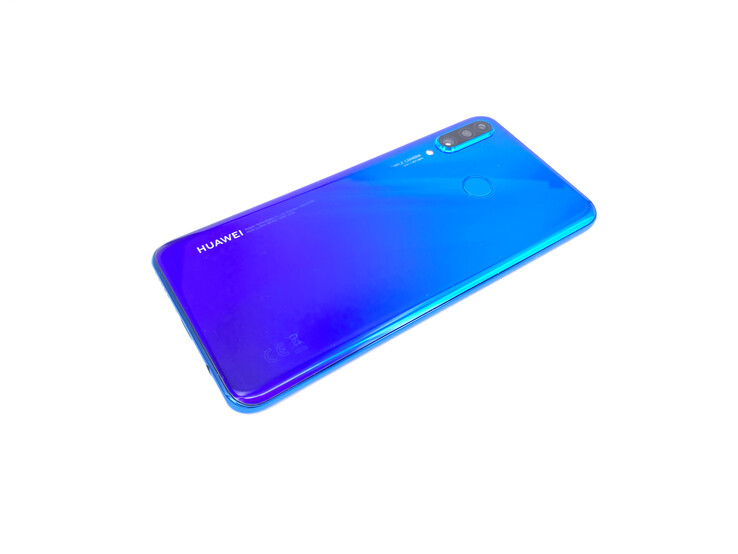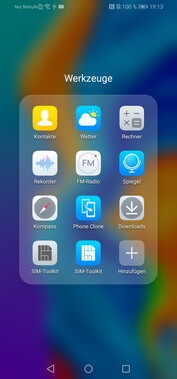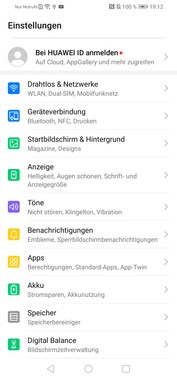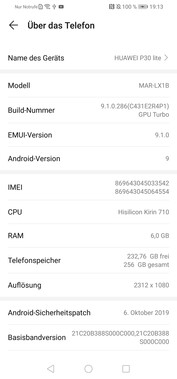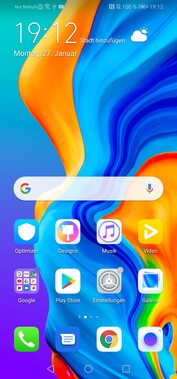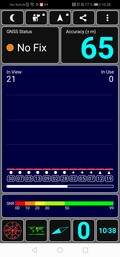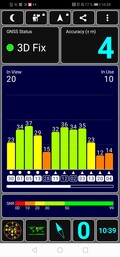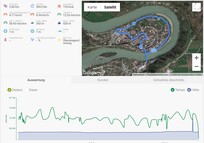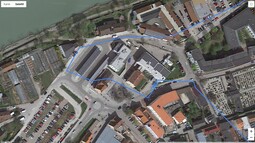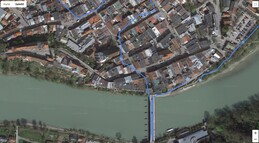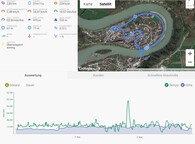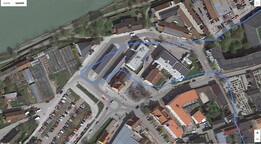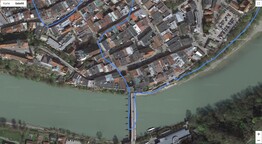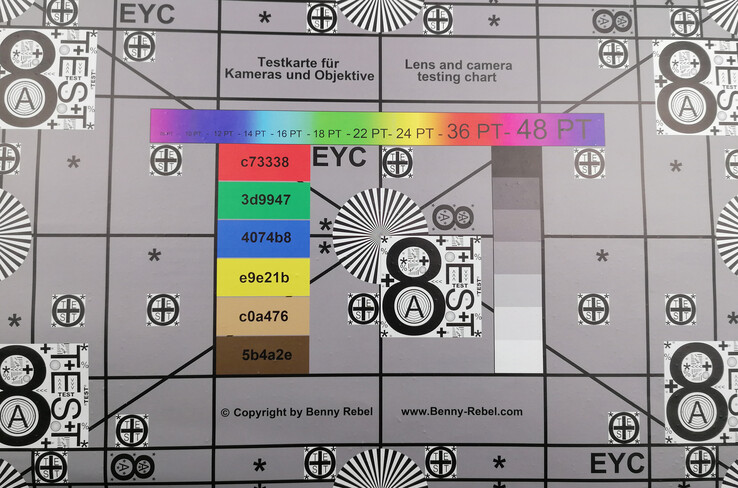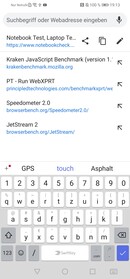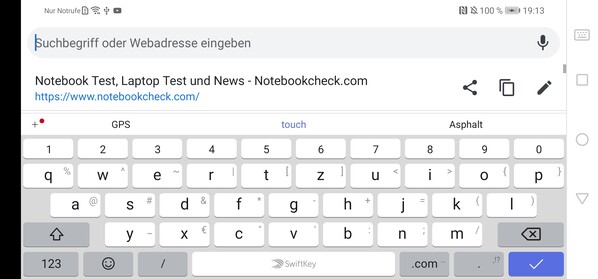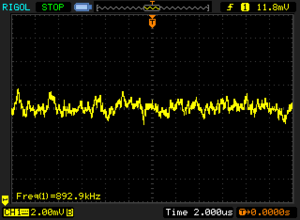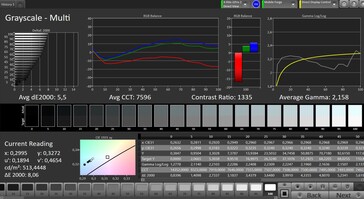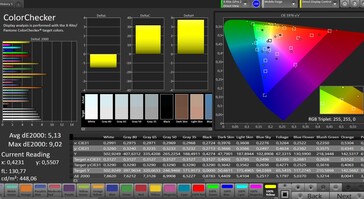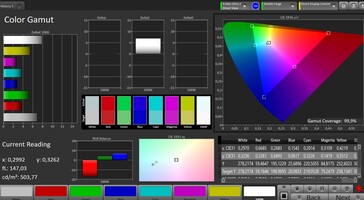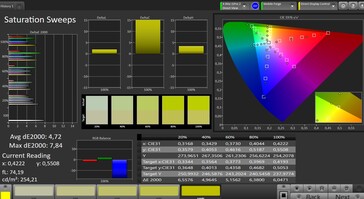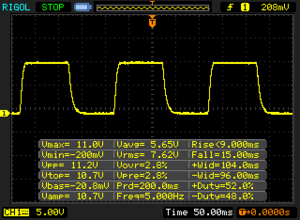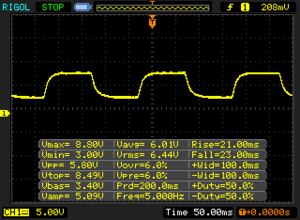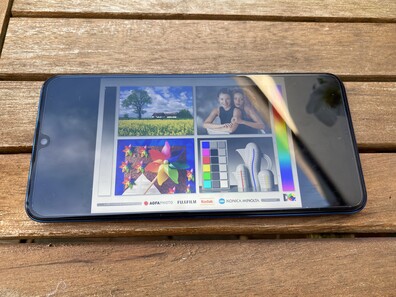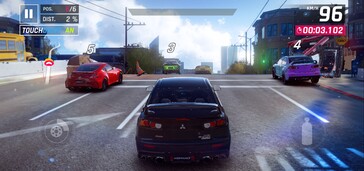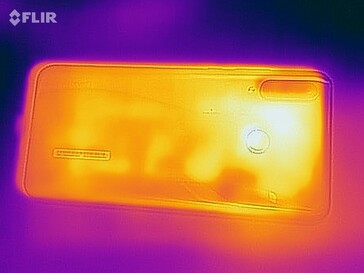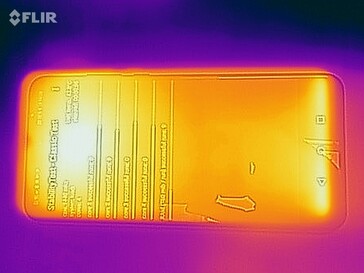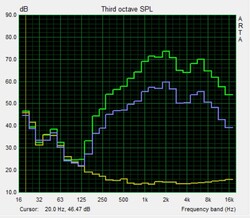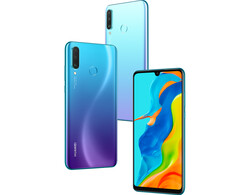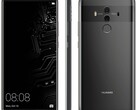Huawei P30 Lite New Edition Smartphone Review – High-End Memory
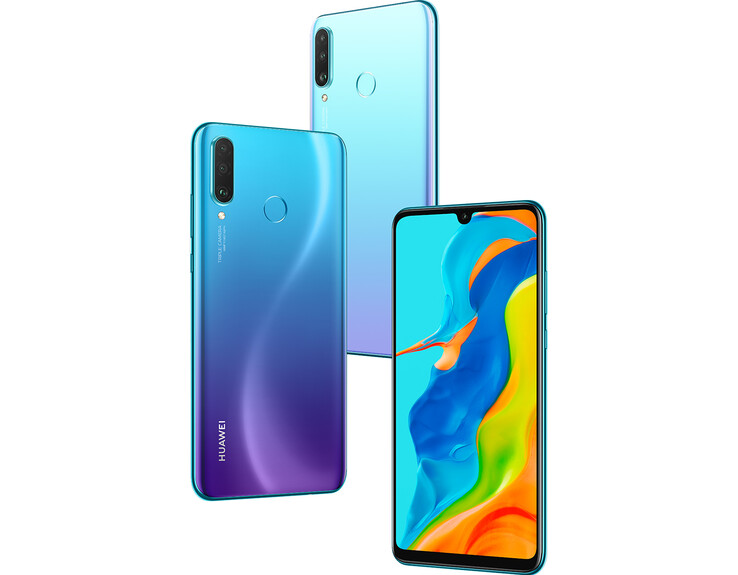
Things are getting out of hand for Huawei. Due to the trade dispute with the US, the Chinese manufacturer currently cannot obtain an Android certification for new smartphones and is instead re-releasing older devices under a new name. The manufacturer has appended "New Edition" to the 2020 version of the Huawei P30 Lite, in order to allude to the smartphone upgrade.
Here, the manufacturer had to get creative, since the design of the phone is not allowed to deviate by too much. One possibility is a storage upgrade and Huawei has certainly exploited this opportunity. Additionally, the front camera has a slightly higher resolution. We were already pleased with the camera, build quality and design of the predecessor. The fact that the 2020 model's ace up its sleeve comes in the form of its generous storage configuration instead of a huge set of changes may be for the best. Let us take a closer look at the Huawei P30 Lite.
Comparison
Rating | Date | Model | Weight | Drive | Size | Resolution | Price |
|---|---|---|---|---|---|---|---|
| 79 % v7 (old) | 01 / 2020 | Huawei P30 Lite New Edition Kirin 710, Mali-G51 MP4 | 159 g | 256 GB UFS 2.1 Flash | 6.15" | 2312x1080 | |
| 79.8 % v7 (old) | 01 / 2020 | Samsung Galaxy A51 Exynos 9611, Mali-G72 MP3 | 172 g | 128 GB UFS 2.0 Flash | 6.50" | 2400x1080 | |
| 78.3 % v7 (old) | 05 / 2019 | Huawei P30 Lite Kirin 710, Mali-G51 MP4 | 159 g | 128 GB eMMC Flash | 6.15" | 2312x1080 | |
| 81.6 % v7 (old) | 07 / 2019 | Xiaomi Mi 9T SD 730, Adreno 618 | 191 g | 64 GB UFS 2.0 Flash | 6.39" | 2340x1080 | |
| 80.2 % v7 (old) | 07 / 2019 | Google Pixel 3a SD 670, Adreno 616 | 147 g | 64 GB eMMC Flash | 5.60" | 2220x1080 |
Case – From Last Year, but Still Modern
There is a new color variant of the P30 Lite New Edition's case: Aside from the established blue color gradient and pure black versions, there is now also a lighter variation called "Breathing Crystal". A white back is available as well, although the available colors can vary depending on the country. At 159 grams, the P30 Lite New Edition is one of the more lightweight smartphones in its price category. Although the dimensions are normal for a modern smartphone, they may be too large for users with small hands.
The waterdrop-style notch on the front and the small frame around the display have remained unchanged. Since the camera on the back continues to significantly protrude from the case, typing on the touchscreen after putting the smartphone down on a table is a wiggly experience.
Even though the construction quality is good, applying pressure to the front results in display distortions. While the P30 Lite New Edition lies in the hand well, there is no IP certification for protection against the elements.
Features – Memory Everywhere
With 6 GB of RAM and 256 GB of storage space, the P30 Lite New Edition is extraordinary within its price category, particularly since Huawei relies on fast UFS 2.1 storage instead of the more common eMMC or UFS 2.0 memory. Furthermore, the card reader now only accepts microSD cards and occupies one of the SIM slots when in use.
Bluetooth continues to be limited to version 4.2 and NFC allows users to make payments with Google Pay or communicate with devices in proximity. While there is a modern USB Type-C port, it only supports USB 2.0 speeds internally, which means transferring large amounts of data can take a while.
Software – New Edition Stuck with Android 9
While the Huawei P30 New Edition is still based on Android 9, the Android 10 update for the P30 Lite has been available since November and so buyers of the P30 Lite can also expect the latest operating system version combined with the EMUI 10 to be released soon. Huawei releasing the smartphone with Android 10 from the beginning would have been great, but the current state of affairs may stem from the trade disagreement.
The security patches of our test device date back to October 2019, which makes them already outdated at the time of our Huawei review.
The manufacturer has prepackaged a lot of its own tools and while EMUI is slightly different from stock Android, using it is a fairly intuitive experience. There are only very few third-party apps, which can be simply uninstalled if they are not needed.
Communication and GPS – Slow Wi-Fi
Even though nominally Wi-Fi 5 was available, the slow Wi-Fi speeds were one of the P30 Lite's drawbacks. Unfortunately, this has remained unchanged for the New Edition: In our test with the reference router Linksys Nighthawk AX12 it achieves results similar to those of its predecessor, netting it one of the last places in our comparison table. This is unfortunate and irritating, since Huawei missed out on the chance to make the most of the update.
In terms of LTE, Cat. 12 is still supported for download speeds of up to 600 MB/s, which is more than okay for a mid-range device. We like the reception: In an urban area and inside of the well-developed German Vodafone network, the reception both during a walk and inside of buildings was good for the most part.
| Networking | |
| iperf3 transmit AX12 | |
| Google Pixel 3a | |
| Samsung Galaxy A51 | |
| Xiaomi Mi 9T | |
| Huawei P30 Lite New Edition | |
| Huawei P30 Lite | |
| iperf3 receive AX12 | |
| Google Pixel 3a | |
| Xiaomi Mi 9T | |
| Samsung Galaxy A51 | |
| Huawei P30 Lite New Edition | |
| Huawei P30 Lite | |
Even indoors, the GPS module is able to very roughly locate us. On Google Maps, the GPS has an accuracy of within 10 meters indoors and the compass works fairly reliably. While the precision outdoors varies in the beginning, it quickly stabilizes to within 4 meters, making it relatively accurate.
The GPS module also had to prove itself in real-world conditions, which is why we took it and the professional navi Garmin Edge 520 along with us on a bike ride. The results of the P30 Lite New Edition were mixed: On the bridge, we appear to be floating across the water and in other areas through buildings and while the accuracy of the Garmin Edge 520 was not perfect either, it was far higher.
Thus we can recommend the P30 Lite New Edition for navigation purposes that do not require absolute precision. For daily use, the accuracy is sufficient.
Telephony and Call Quality – Good and Clear
Instead of Google's standard app, Huawei has developed its own telephony app. It is well-structured and focuses on the dial pad.
The Huawei P30 Lite New Edition supports VoLTE and calls over Wi-Fi.
The call quality is good, our conversational partner is clearly audible without distortions or interfering noise. Similarly, our voice is transmitted in a relatively clear manner, even if we speak somewhat quietly. However, this only applies to using the earpiece while being close to the installed microphone, since we have to talk louder in hands-free mode in order for the microphone to capture our voice. However, our conversational partner can still be heard fairly clearly.
Cameras – Solid Mid-Range Lenses
The camera optics on the back offer the same specifications as the ones on the first P30 Lite: 48 megapixels for the standard lens and 8 megapixels for the wide-angle lens. Both of them are complemented by a depth of field camera with 2 megapixels. Bokeh, an artificial blurriness background effect, continues to be a mixed bag: Sometimes it works rather well, whereas in other situations, it results in large image inaccuracies.
While users who wish to do so can take pictures at the high native resolution of the main camera, it creates 12-megapixel pictures by default. What is the point? Apart from better marketing due to a higher-resolution camera, combining four pixels into one supposedly results in a better light yield. We were glad to see that the high camera resolution does not result in longer delays regardless of the mode and that the camera is very quick.
We like the image quality of the main camera in normal lighting conditions and the colors are accurately represented. Its dynamic range is good overall, which means it does not get immediately overwhelmed in slightly darker environments.
Although in theory, the camera of course has the capability to record in 4K due to the high resolution, videos can only be recorded in 1080p and at 30 FPS. When recording videos, the zoom feature is still available unlike with the software of the Galaxy A51, which requires users to choose a lens beforehand and does not allow for switching between them during recording. The image quality of the main cameras is decent here as well and it adjusts quickly to new lighting conditions.
The wide-angle lens takes significantly darker pictures due to the lower luminous intensity and the difference is very noticeable when zooming-in manually. At least the zoom has very fine steps.
On the front, there is a new 32-megapixel camera. While it captures good, detailed pictures, it struggles with the dynamic range in dark areas.
In the lab, the main camera does well and offers decent image sharpness, although the test image tends to appear strangely pale around the edges. When zooming in, image artifacts can be made out on the outlines of objects as well, which is normal for a mid-range camera.
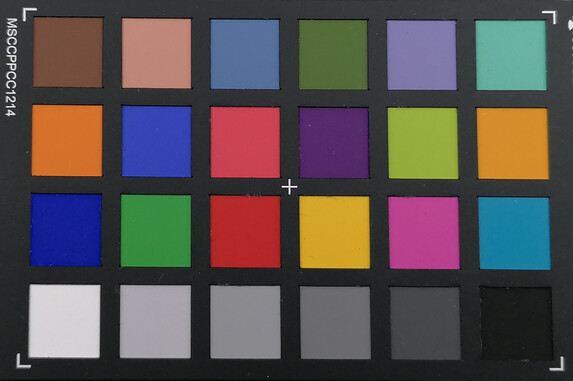
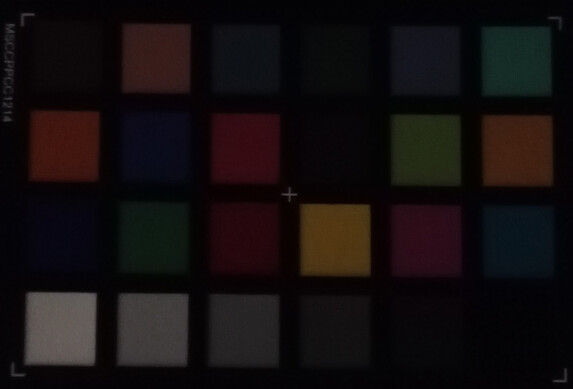
Accessories and Warranty – Quick Charger on Board
Nothing has changed in terms of the accessories compared to the P30 Lite: The manufacturer still includes a 20-watt quick charger, a USB Type-C cable, a SIM tool and a wired headset. Due to the identical dimensions, cases made for the P30 Lite will still fit.
The manufacturer offers a 24-month warranty for the smartphone.
Input Devices & Handling – P30 Lite New Edition with Fingerprint Sensor
The touchscreen of the Huawei phone is responsive and navigating the menus can either be done with the on-screen buttons or gestures.
On the back, there is a very precise fingerprint sensor, which unlocks the smartphone very quickly. It can also be unlocked via facial recognition. The smartphone can be set up to immediately activate facial recognition when it is raised, which is the most comfortable option. In order to prevent accidental unlocking, there is an option that requires users to first wake the device up with the standby button. The recognition is rather reliable and not easy to trick.
Display – Decent IPS Screen
Those who were hoping for an AMOLED display will be disappointed: Unlike for example the Samsung Galaxy A51 or the Xiaomi Mi 9T, Huawei uses an IPS screen. As a result, colors tend to look less vibrant and the black values are far from perfect. However, an IPS display is not necessarily worse than an AMOLED.
The brightness is decent and an average brightness of 481 cd/m² is a good basis for many scenarios. While the illumination is not quite as even as on many other devices, the differences visible to the naked eye are minor at best.
| |||||||||||||||||||||||||
Brightness Distribution: 88 %
Center on Battery: 507 cd/m²
Contrast: 1334:1 (Black: 0.38 cd/m²)
ΔE ColorChecker Calman: 4.72 | ∀{0.5-29.43 Ø4.78}
ΔE Greyscale Calman: 5.5 | ∀{0.09-98 Ø5}
99.9% sRGB (Calman 2D)
Gamma: 2.158
CCT: 7596 K
| Huawei P30 Lite New Edition IPS, 2312x1080, 6.2" | Samsung Galaxy A51 AMOLED, 2400x1080, 6.5" | Huawei P30 Lite IPS LCD, 2312x1080, 6.2" | Xiaomi Mi 9T AMOLED, 2340x1080, 6.4" | Google Pixel 3a P-OLED, 2220x1080, 5.6" | |
|---|---|---|---|---|---|
| Screen | 24% | 8% | 34% | -2% | |
| Brightness middle (cd/m²) | 507 | 589 16% | 451 -11% | 589 16% | 403 -21% |
| Brightness (cd/m²) | 481 | 589 22% | 430 -11% | 589 22% | 411 -15% |
| Brightness Distribution (%) | 88 | 94 7% | 90 2% | 96 9% | 96 9% |
| Black Level * (cd/m²) | 0.38 | 0.55 -45% | |||
| Contrast (:1) | 1334 | 820 -39% | |||
| Colorchecker dE 2000 * | 4.72 | 2.22 53% | 1.4 70% | 2.5 47% | 5.1 -8% |
| Colorchecker dE 2000 max. * | 7.84 | 8.24 -5% | 4.4 44% | 4.9 37% | 11 -40% |
| Greyscale dE 2000 * | 5.5 | 2.6 53% | 2.5 55% | 1.6 71% | 2 64% |
| Gamma | 2.158 102% | 2.111 104% | 2.22 99% | 2.24 98% | 2.22 99% |
| CCT | 7596 86% | 6508 100% | 6422 101% | 6544 99% | 6589 99% |
* ... smaller is better
Screen Flickering / PWM (Pulse-Width Modulation)
| Screen flickering / PWM detected | 893 Hz | ≤ 10 % brightness setting | |
The display backlight flickers at 893 Hz (worst case, e.g., utilizing PWM) Flickering detected at a brightness setting of 10 % and below. There should be no flickering or PWM above this brightness setting. The frequency of 893 Hz is quite high, so most users sensitive to PWM should not notice any flickering. In comparison: 53 % of all tested devices do not use PWM to dim the display. If PWM was detected, an average of 8118 (minimum: 5 - maximum: 343500) Hz was measured. | |||
At 0.38 cd/m², the black value is still fine, although a faint gray veil can be observed when viewing black images on the display. The contrast ratio of 1,334:1 is satisfactory as well. While the Huawei P30 Lite New Edition is fairly average in terms of color accuracy, we performed our tests with the mode "vivid" selected, which, as our review of the P30 Lite has shown, is less color-accurate than the "normal" mode. Even so, the P30 Lite New Edition is decent and represents colors fairly realistically in all spectrophotometer and CalMAN configurations we tested.
Interestingly, our measurements show the blue tint to be much less pronounced this time around than on the P30 Lite when using the same mode, so Huawei appears to have made some improvements here.
Display Response Times
| ↔ Response Time Black to White | ||
|---|---|---|
| 24 ms ... rise ↗ and fall ↘ combined | ↗ 9 ms rise | |
| ↘ 15 ms fall | ||
| The screen shows good response rates in our tests, but may be too slow for competitive gamers. In comparison, all tested devices range from 0.1 (minimum) to 240 (maximum) ms. » 53 % of all devices are better. This means that the measured response time is worse than the average of all tested devices (20.2 ms). | ||
| ↔ Response Time 50% Grey to 80% Grey | ||
| 44 ms ... rise ↗ and fall ↘ combined | ↗ 21 ms rise | |
| ↘ 23 ms fall | ||
| The screen shows slow response rates in our tests and will be unsatisfactory for gamers. In comparison, all tested devices range from 0.165 (minimum) to 636 (maximum) ms. » 72 % of all devices are better. This means that the measured response time is worse than the average of all tested devices (31.6 ms). | ||
Performance – Leaving Something to be Desired
The SoC is identical to that of the Huawei P30 Lite: A HiSilicon Kirin 710 with 8 cores and a clock speed of up to 2.2 GHz. We already criticized the predecessor's processor for not being able to always offer enough performance to reliably prevent micro stutters and multi-tasking delays. This is disappointing, since other smartphones in this price category are much more convincing in this regard. While the smartphone is still around average in terms of system performance according to our benchmarks, a faster, more modern SoC would have been a worthwhile upgrade.
The graphics unit is an even bigger issue: The ARM Mali-G51 MP4 reaches far lower frame rates than the competition in some cases, whereas the Xiaomi Mi 9T is able to set itself apart due to its high performance.
| PCMark for Android | |
| Work performance score (sort by value) | |
| Huawei P30 Lite New Edition | |
| Samsung Galaxy A51 | |
| Huawei P30 Lite | |
| Xiaomi Mi 9T | |
| Google Pixel 3a | |
| Average HiSilicon Kirin 710 (7004 - 9854, n=13) | |
| Work 2.0 performance score (sort by value) | |
| Huawei P30 Lite New Edition | |
| Samsung Galaxy A51 | |
| Huawei P30 Lite | |
| Xiaomi Mi 9T | |
| Google Pixel 3a | |
| Average HiSilicon Kirin 710 (5803 - 7141, n=12) | |
While the browsing speed of the Huawei P30 Lite New Edition cannot be called particularly fast relative to its competitors, it at least achieves an average result in our comparison.
| Jetstream 2 - 2.0 Total Score | |
| Average of class Smartphone (23.8 - 387, n=153, last 2 years) | |
| Xiaomi Mi 9T (Chrome 75.0.3770.101) | |
| Google Pixel 3a | |
| Huawei P30 Lite (Chrome 74) | |
| Average HiSilicon Kirin 710 (30 - 33, n=8) | |
| Huawei P30 Lite New Edition (Chrome 79) | |
| Samsung Galaxy A51 (Chrome 79) | |
| JetStream 1.1 - Total Score | |
| Xiaomi Mi 9T (Chrome 75.0.3770.101) | |
| Huawei P30 Lite (Chrome 74) | |
| Samsung Galaxy A51 (Chrome 79) | |
| Huawei P30 Lite New Edition (Chrome 79) | |
| Average HiSilicon Kirin 710 (47 - 55.1, n=10) | |
| Speedometer 2.0 - Result 2.0 | |
| Average of class Smartphone (15.2 - 643, n=128, last 2 years) | |
| Xiaomi Mi 9T (Chrome 75.0.3770.101) | |
| Average HiSilicon Kirin 710 (30.4 - 33.9, n=6) | |
| Huawei P30 Lite (Chrome 74) | |
| Huawei P30 Lite New Edition (Chrome 79) | |
| Samsung Galaxy A51 (Chrome 79) | |
| WebXPRT 3 - Overall | |
| Average of class Smartphone (38 - 380, n=35, last 2 years) | |
| Xiaomi Mi 9T (Chrome 75.0.3770.101) | |
| Huawei P30 Lite (Chrome 74) | |
| Average HiSilicon Kirin 710 (52 - 69, n=11) | |
| Samsung Galaxy A51 (Chrome 79) | |
| Huawei P30 Lite New Edition (Chrome 79) | |
| Octane V2 - Total Score | |
| Average of class Smartphone (2228 - 121337, n=200, last 2 years) | |
| Xiaomi Mi 9T (Chrome 75.0.3770.101) | |
| Google Pixel 3a | |
| Samsung Galaxy A51 (Chrome 79) | |
| Huawei P30 Lite (Chrome 74) | |
| Average HiSilicon Kirin 710 (9041 - 10544, n=13) | |
| Huawei P30 Lite New Edition (Chrome 79) | |
| Mozilla Kraken 1.1 - Total | |
| Samsung Galaxy A51 (Chrome 79) | |
| Huawei P30 Lite New Edition (Chrome 79) | |
| Average HiSilicon Kirin 710 (3999 - 4853, n=13) | |
| Huawei P30 Lite (Chrome 74) | |
| Google Pixel 3a | |
| Xiaomi Mi 9T (Chrome 75.0.3770.101) | |
| Average of class Smartphone (257 - 28190, n=155, last 2 years) | |
* ... smaller is better
In terms of storage, the P30 Lite New Edition is finally able to showcase its biggest strength: Both the test with our reference microSD card Toshiba Exceria Pro M501 as well as the test of the internal storage show very fast access times. This impacts how long it takes for apps to start, accessing data such as images in the gallery and copying files internally. The smartphone is indeed very fast when it comes to these tasks.
| Huawei P30 Lite New Edition | Samsung Galaxy A51 | Huawei P30 Lite | Xiaomi Mi 9T | Google Pixel 3a | Average 256 GB UFS 2.1 Flash | Average of class Smartphone | |
|---|---|---|---|---|---|---|---|
| AndroBench 3-5 | -32% | -39% | -41% | -52% | -10% | 173% | |
| Sequential Read 256KB (MB/s) | 800 | 496.1 -38% | 293.2 -63% | 492.7 -38% | 302 -62% | 829 ? 4% | 2223 ? 178% |
| Sequential Write 256KB (MB/s) | 391.1 | 184.9 -53% | 158.6 -59% | 179.2 -54% | 253.9 -35% | 376 ? -4% | 1838 ? 370% |
| Random Read 4KB (MB/s) | 198.7 | 110.8 -44% | 71.6 -64% | 128.6 -35% | 63.6 -68% | 168.8 ? -15% | 295 ? 48% |
| Random Write 4KB (MB/s) | 171.6 | 104.4 -39% | 87.3 -49% | 107.8 -37% | 99.9 -42% | 143.6 ? -16% | 335 ? 95% |
| Sequential Read 256KB SDCard (MB/s) | 76.6 ? | 73 ? -5% | 76.8 ? 0% | 66.8 ? -13% | |||
| Sequential Write 256KB SDCard (MB/s) | 66.8 ? | 60.1 ? -10% | 67.8 ? 1% | 56.3 ? -16% |
Gaming – Huawei Limited to 30 FPS
Current games can be played at 30 FPS on the Huawei P30 Lite New Edition. Unlike the Galaxy A51 however, it does not support 60 Hz. Furthermore, the frame rate is inconsistent in more-demanding games such as Asphalt 9, even though the racing simulator remains relatively smooth. The gaming performance of our Huawei smartphone is noticeably slower compared to other phones in this price category.
We have no complaints regarding the controls via gyroscope and touchscreen, since they consistently work well.
Emissions – Significant Throttling
Temperature
Although the maximum surface temperatures under prolonged stress are still acceptable, some spots become very warm, which can be uncomfortable during the summer, where the ambient temperatures are high. During idle, users may notice a slightly increased temperature on the bottom of the front at worst.
As with the predecessor, the performance drops by 20% during the GFXBench battery test after around 17 loops of the demanding Manhattan 3.1 benchmark. Thus, users should not expect the full performance to be available after prolonged load.
(±) The maximum temperature on the upper side is 42.5 °C / 109 F, compared to the average of 35.2 °C / 95 F, ranging from 21.9 to 247 °C for the class Smartphone.
(±) The bottom heats up to a maximum of 43.5 °C / 110 F, compared to the average of 34 °C / 93 F
(±) In idle usage, the average temperature for the upper side is 32.2 °C / 90 F, compared to the device average of 32.9 °C / 91 F.
Speaker
While the speaker on the bottom edge of the P30 Lite New Edition is significantly quieter than on the P30 Lite, maximum volume does not introduce distortions. The sound is fairly satisfactory for a mid-range smartphone overall: Deeper mids are audible and the sound feels warm and balanced.
Headphones can be connected via the 3.5 mm jack or Bluetooth for a better sound experience during music playback. Although Bluetooth 5 would have offered more range, Bluetooth 4.2 also allows for stable connections, and thanks to the aptX HD codec, the audio quality is decent as well.
Huawei P30 Lite New Edition audio analysis
(±) | speaker loudness is average but good (80.8 dB)
Bass 100 - 315 Hz
(-) | nearly no bass - on average 63.4% lower than median
(+) | bass is linear (0% delta to prev. frequency)
Mids 400 - 2000 Hz
(-) | nearly no mids - on average 63.4% lower than median
(+) | mids are linear (0% delta to prev. frequency)
Highs 2 - 16 kHz
(-) | nearly no highs - on average 63.4% lower than median
(+) | highs are linear (0% delta to prev. frequency)
Overall 100 - 16.000 Hz
(-) | overall sound is not linear (120.2% difference to median)
Compared to same class
» 89% of all tested devices in this class were better, 9% similar, 2% worse
» The best had a delta of 11%, average was 35%, worst was 134%
Compared to all devices tested
» 97% of all tested devices were better, 3% similar, 1% worse
» The best had a delta of 4%, average was 24%, worst was 134%
Samsung Galaxy A51 audio analysis
(±) | speaker loudness is average but good (81.7 dB)
Bass 100 - 315 Hz
(-) | nearly no bass - on average 65.7% lower than median
(+) | bass is linear (0% delta to prev. frequency)
Mids 400 - 2000 Hz
(-) | nearly no mids - on average 65.7% lower than median
(+) | mids are linear (0% delta to prev. frequency)
Highs 2 - 16 kHz
(-) | nearly no highs - on average 65.7% lower than median
(+) | highs are linear (0% delta to prev. frequency)
Overall 100 - 16.000 Hz
(-) | overall sound is not linear (123.1% difference to median)
Compared to same class
» 92% of all tested devices in this class were better, 7% similar, 1% worse
» The best had a delta of 11%, average was 35%, worst was 134%
Compared to all devices tested
» 97% of all tested devices were better, 2% similar, 0% worse
» The best had a delta of 4%, average was 24%, worst was 134%
Energy Management – Two Days of Low-Intensity Use
Energy Consumption
The energy consumption values of the Huawei P30 Lite are similar to those of its predecessor, although there are a few differences for example in terms of the average consumption under load. However, since the P30 Lite was far from economical, this is not a good result for the New Edition: Other smartphones in this price class are much more energy efficient.
| Off / Standby | |
| Idle | |
| Load |
|
Key:
min: | |
| Huawei P30 Lite New Edition 3340 mAh | Samsung Galaxy A51 4000 mAh | Huawei P30 Lite 3340 mAh | Xiaomi Mi 9T 4000 mAh | Google Pixel 3a 3000 mAh | Average HiSilicon Kirin 710 | Average of class Smartphone | |
|---|---|---|---|---|---|---|---|
| Power Consumption | 8% | -4% | 44% | 35% | -6% | -8% | |
| Idle Minimum * (Watt) | 0.95 | 0.9 5% | 0.91 4% | 0.54 43% | 0.61 36% | 1.058 ? -11% | 0.848 ? 11% |
| Idle Average * (Watt) | 2.1 | 1.7 19% | 2.41 -15% | 0.95 55% | 1.56 26% | 2.2 ? -5% | 1.435 ? 32% |
| Idle Maximum * (Watt) | 2.4 | 1.8 25% | 2.43 -1% | 1.08 55% | 1.6 33% | 2.57 ? -7% | 1.621 ? 32% |
| Load Average * (Watt) | 4.2 | 5.2 -24% | 4.57 -9% | 2.7 36% | 2.67 36% | 4.61 ? -10% | 6.99 ? -66% |
| Load Maximum * (Watt) | 7.7 | 6.6 14% | 7.57 2% | 5.4 30% | 4.33 44% | 7.6 ? 1% | 11.3 ? -47% |
* ... smaller is better
Battery Life
The battery capacity has not changed: The Huawei P30 Lite New Edition also comes with a 3,340-mAh battery. Likely due to software improvements, Huawei has still managed to improve the battery life by 16% in our tests. While the smartphone is still far behind the Xiaomi Mi 9T in terms of stamina, it is at least able to compete with the Galaxy A51, which comes with a larger battery.
Although a runtime of just under 12 hours in our Wi-Fi test is no reason to celebrate, it is still solid and sufficient for two workdays of somewhat economical use. The charger, which is rated for up to 20 watts, is able to fully charge the smartphone in just under 2 hours.
| Huawei P30 Lite New Edition 3340 mAh | Samsung Galaxy A51 4000 mAh | Huawei P30 Lite 3340 mAh | Xiaomi Mi 9T 4000 mAh | Google Pixel 3a 3000 mAh | |
|---|---|---|---|---|---|
| Battery runtime | 14% | -16% | 40% | -15% | |
| Reader / Idle (h) | 22.7 | 28.2 24% | 20.8 -8% | 35.6 57% | |
| H.264 (h) | 13.4 | 14.1 5% | 11.4 -15% | 20.1 50% | |
| WiFi v1.3 (h) | 12 | 11.6 -3% | 8.6 -28% | 16.5 38% | 10.2 -15% |
| Load (h) | 3.7 | 4.8 30% | 3.3 -11% | 4.3 16% |
Pros
Cons
Verdict – Quite the Predicament
With the P30 Lite New Edition, Huawei has not reinvented the wheel and instead released a solid update that was likely born out of necessity. Huawei apologizes for the familiar, but in no way outdated design with a memory configuration that is almost unheard of at this price point. Its predecessor already offered a few obvious advantages: The decent cameras have returned and while the higher resolution of the front camera does not make a difference during daily use, it is still nice to have. Further advantages include the construction quality, responsive fingerprint sensor on the back and the good IPS panel.
In terms of performance, not a lot has changed aside from the fast storage: Although the operating system runs relatively smoothly on the SoC, the smartphone is slightly slower overall compared to others in its price range. This is made worse by the fact that the processor throttles under load. Similarly, the slow Wi-Fi and the low number of supported LTE frequencies are an annoyance.
While Huawei's P30 Lite New Edition could use more modern components, the manufacturer makes up for them with a lot of storage and a sleek design.
Furthermore, Bluetooth version 4.2 hints at the fact that the phone's design is slightly dated, since Huawei would have likely used more modern components for its current mid-range smartphone, if it were not for the trade dispute.
The result is a solid mid-range smartphone, which should please users with a need for a lot of storage. However, the shortcomings mentioned above should be kept in mind.
Huawei P30 Lite New Edition
- 01/27/2020 v7 (old)
Florian Schmitt




